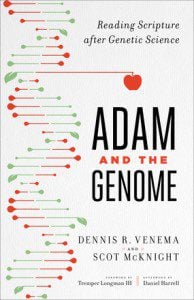Quote of the week, by Erik Ainge on Mark Sanchez, Jets QB: “I’d know as good as anybody — what Mark does off the field is child’s play. He’s dumb about it. He’s stupid while being stupid. You have to be smart while being stupid, and he’s dumb while being dumb.”
Ethnic diversity marks the American experiment, especially in the 20th Century, so this collection of photographs from Ellis Island of immigrants in cultural garb and expression tells in some ways the story of America — but not always the church!
Mark Stevens on justice: “Justice in a biblical sense is about restoration to the image of God creation picture we have in Gen 1-2. Restoration to the picture we have of creation as it should’ve been. Creation as it was created to be! But unlike the social justice of the culture or the judicial justice of the courts; it is restoration to the way God created humanity and creation! It is restoration to God’s standard. When Scripture speaks of justice it does not only speak of justice for the poor. It speaks of justice for all humanity. It speaks of restoration to the image of God for each and every person! It is my opinion that justice in a biblical sense and justice as portrayed by Jesus is best described as ‘Restorative Justice’. Biblical justice is the setting of the world to rights in the lives of those who have had their created in the image of God status robbed of them. Marriage, family, suffering, violence, displaced, provision of basics, of education, of those who are taken advantage of for financial gain. The list in our world today is endless.”
Higgs Boson, explained, and moralized: “In conclusion, coming back to Earth, I’d like to mention an aspect of the discovery I can only describe as moral. The scientific work leading to the Higgs particle discovery involved thousands of engineers and physicists, not to mention billions of taxpayers, from all over the world co-operating to pursue a common goal. For most of the highly gifted participants, it involved long, often frustrating and sometimes tedious labor, with modest prospects for personal reward. They did it, anyway, because they wanted to understand the world better, and to be part of something great. They did, and they were. In this we have seen, I think, an example of humanity at its best.”
Rachel on birdwatching, year by year: “The first rule of human-animal relationships is this: Never name an animal that isn’t your pet. You don’t want to get too familiar with the pig you’ll be sending to slaughter or the stray cat that spends too much time by the road. IfCharlotte’s Web taught us anything, it’s not to get attached (and not to take an unsupervised rat to a fair). So we didn’t name them at first—this family of flycatchers that built a nest in the corner of our carport four springs ago. We just watched their progress as each day their home grew from a mess of moss and twigs to a sturdy little fortress, high and safe from the elements, with a lovely view of our garbage cans. Location. Location. Location.”
This is fascinating: 10 body parts we don’t need.
Psittacosaurus and bipedalism: “We know that a significant event in evolution occurred when animals climbed out of the water to live on the land. Mammals started out as tetrapods, or four-legged animals. Most mammals are still traveling on four legs. But a bipedal species has evolutionary advantages. It has a better view of approaching predators, can wade into deeper water for fish, and reach up higher to snag fruit from the trees. In order to stay upright (and keep moving), the hipbones in humans needed to be changed from a locomotive device (helping to use the back legs to travel) to a load-bearing one (keep the top half on top). Bipedalism allowed reduce the amount of skin exposed to the tropical sun, which helped to avoid hyperthermia. It freed up our hands and arms for tool making. This practice is s estimated to have started about 2.6 million years ago. Bipedalism saved energy during locomotion, enabling long distance running and hunting. Humans had to walk, because climatic conditions forced them to come down from the trees to the savannas in order to search for water and food. They had to hurry in order to evade predators. Or at least try to. Bipedalism caused humans to develop bigger brains. Encephalization refers to the tendency for a species to increase brain size through evolutionary time. The rapid increase in brain size occurred about 500,000 years ago.”
40 years in a row. Fun.
James McGrath, on the development of early christology: “And so, if there is a good case to be made that Paul thought in terms of Jesus having had some sort of prior heavenly existence before appearing on Earth, it was most likely the pre-existent Messiah he had in mind, a view not incompatible with his also having had a normal birth (which Paul also mentions) and having been fully human. How the prior existence related to the historical human one, no one seems to have yet been concerned to answer…. Interpreting Paul’s language about Christ as mythological, as about Jesus having had a prior existence before his earthly life, not as a divine hypostasis but as a pre-existent human being (whatever that may have meant for these ancient authors), may help us not only to fit Paul into his Jewish context, but also explain why Paul could say the things he did about Jesus and not have them be felt to be controversial, as though they were modifications of or departures from Jewish monotheism. What do others think? I recall that some objected to James D. G. Dunn’s attempt (in his Christology in the Making) to see Philippians 2:6-11 as about the human Jesus contrasted with Adam, that Dunn was “mythologizing” Jesus’ humanity. I wonder whether that is not precisely what Paul – and presumably other early Christians before and after him – did, just as non-Christian Jewish thinkers did with reference to the Messiah when not yet identified with some actual historical individual.” And then there’s John 1.
A fair-minded review of Edward Fudge on annihilationism.
Steven Yaccino and ancient beer: “By contemporary standards, it would have been a spoiled batch here at Great Lakes Brewing Company, a craft beer maker based in Ohio, where machinery churns out bottle after bottle of dark porters and pale ales. But lately, Great Lakes has been trying to imitate a bygone era. Enlisting the help of archaeologists at the University of Chicago, the company has been trying for more than year to replicate a 5,000-year-old Sumerian beer using only clay vessels and a wooden spoon.”
 The oldest genome ever to be sequenced, an ancient horse from Canada: “According to a study published in the current issue of the scientific journal Nature, the genome of an ancient horse that lived in what is now Canada’s Yukon isabout 10 times older than the previous oldest genome – that of a human who lived about 70,000 years ago. That means the hindsight of paleogenomics has been dialed backward some 630,000 years from where it was, offering up the extraordinary possibility that scientists may be able to reproduce our prehistoric record in greater detail than ever before, tracing not just the evolution of horses but – tantalizingly – of humans. “We have beaten the time barrier,” said evolutionary biologist Ludovic Orlando of the University of Copenhagen, a lead author of the study, in a statement. “All of a sudden, you have access to many more extinct species than you could have ever dreamed of sequencing before.”
The oldest genome ever to be sequenced, an ancient horse from Canada: “According to a study published in the current issue of the scientific journal Nature, the genome of an ancient horse that lived in what is now Canada’s Yukon isabout 10 times older than the previous oldest genome – that of a human who lived about 70,000 years ago. That means the hindsight of paleogenomics has been dialed backward some 630,000 years from where it was, offering up the extraordinary possibility that scientists may be able to reproduce our prehistoric record in greater detail than ever before, tracing not just the evolution of horses but – tantalizingly – of humans. “We have beaten the time barrier,” said evolutionary biologist Ludovic Orlando of the University of Copenhagen, a lead author of the study, in a statement. “All of a sudden, you have access to many more extinct species than you could have ever dreamed of sequencing before.”
First and summer jobs of former presidents.
Monte Morin, human evolution and the capacity to throw hard: “What do human evolution and baseball have in common? Pretty much everything, according to a new Harvard study. While anybody who’s ever watched a chimpanzee fling poop at the local zoo can confirm that our primate cousins will sometimes nail an unlucky target, it’s also quite obvious that their throwing style will not land them any major league pitching contracts. According to a study published recently in Nature, the evolutionary and biological seeds for today’s 90-mile-per-hour fastball were sewn roughly 2 million years ago. That’s when a variety of evolved anatomical features began to coalesce in early humans, giving them the ability to hurl projectiles overhand at greater and greater speeds.”
The early Bible — it was in Greek, not Hebrew — in a fine interview by Pete Enns with Timothy Michael Law.












